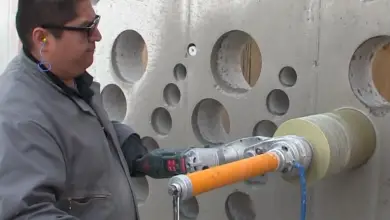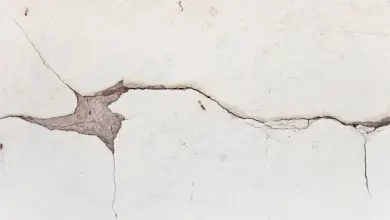What Filler Do You Use for Render
The recommended filler for render crack repair is a sealant that does not shrink when curing, such as 5200 by 3M or Stixall by Everbuild.
Other options include using caulk in combination with sand or gravel to create a texture that matches the surrounding render.
Traditional methods like cement or caulk alone are not recommended as they do not accommodate movement in the rendered walls.
It is important to properly prepare the surface with Damp Concrete Primer before applying the sealant, and to follow safety precautions when using chemical products for render repair.
Did You Know?
1. Did you know that one of the most common fillers used for rendering walls is sand? Sand acts as a stable and solid foundation, allowing the render to adhere properly to the surface.
2. In some cases, lime putty can be used as a filler for rendering. Lime putty is derived from limestone and has been used for centuries in construction due to its exceptional properties, including being fire-resistant and allowing the walls to “breathe.”
3. Another lesser-known filler used for rendering is crushed shells. Crushed shells add both a unique texture and a natural aesthetic to the finish. This type of filler is commonly used in coastal regions to complement the surroundings.
4. An unexpected filler used for rendering is sawdust. When mixed with lime or cement, sawdust adds a fibrous texture, creating a distinctive look. Additionally, it helps to enhance thermal insulation properties in the rendered surface.
5. Some renderers use a mix of materials such as clay and straw, known as “cob,” as a more eco-friendly filler. This traditional method has been used for centuries and is known for its sustainability and insulation properties.
Traditional Methods Fail To Repair Cracks In Rendered Walls
When it comes to repairing cracks in rendered walls, traditional methods using caulk or cement often fall short. These materials are unable to provide a permanent fix because they do not possess the necessary flexibility and adhesion properties. As a result, cracks tend to reappear over time, causing frustration and requiring repeated repairs.
Fortunately, there are alternative solutions available that are specifically designed to address the challenges of render crack repair. These solutions are capable of accommodating slight movements in the building without compromising the structural integrity. By using these specialized kits, property owners can finally achieve long-lasting repairs and eliminate the problem of recurring cracks.
Specialized Kit For Render Crack Repair
For buildings that experience slight movements without any structural damage, it is highly recommended to use a specialized kit for render crack repair.
These kits contain all the necessary components and instructions to effectively address the cracks in rendered walls. They provide a comprehensive and reliable solution that is specifically designed to withstand the unique conditions of render walls.
By applying the materials included in these kits, such as sealants and backer rods, individuals can ensure that the repaired cracks remain intact even when subjected to movements.
The kits often come with detailed instructions that guide users through the repair process, making it accessible to both professional contractors and DIY enthusiasts.
Using A Mortar Rake For Crack Repair
When it comes to repairing cracks in rendered walls, utilizing a mortar rake can be a highly effective technique. This tool allows individuals to open up the crack and create sufficient space for the repair materials to fill. By using a mortar rake, one can remove any loose or deteriorated render from the crack, ensuring a clean and sturdy foundation for the repair process.
Using a mortar rake also provides an opportunity to assess the depth and extent of the crack. This information is crucial for determining the appropriate amount of filler needed to achieve a thorough and successful repair. By taking the time to properly prepare the crack using a mortar rake, individuals can ensure that the repair solution adheres securely and provides long-term stability.
- Utilize a mortar rake to open up the crack and create space for repair materials.
- Remove loose or deteriorated render with the mortar rake for a clean foundation.
- Assess the depth and extent of the crack to determine the right amount of filler.
- Properly preparing the crack using a mortar rake ensures secure adherence and long-term stability.
Recommended Sealants For Filling Cracks In Rendered Walls
When it comes to filling cracks in rendered walls, choosing the right sealant is crucial. It is important to select a sealant that is suitable for the specific requirements of this task. Sealants that do not shrink when curing are highly recommended for render crack repair. Two popular options in this category are 5200 by 3M and Stixall by Everbuild.
The 5200 sealant by 3M is renowned for its durability and flexibility. It is specifically designed to withstand harsh weather conditions and is commonly used in marine applications. On the other hand, Stixall sealant by Everbuild also boasts excellent adhesive properties and a non-shrinking formula, making it ideal for render crack repair.
Both sealants provide a reliable solution for filling cracks in rendered walls, ensuring a long-lasting and visually appealing result.
- 5200 sealant by 3M
- Stixall sealant by Everbuild
Using Backer Rod To Prevent Sealant Adherence
To enhance the effectiveness of sealant application in render crack repair, it is recommended to use a backer rod. A backer rod is a closed cell foam tube that is placed in the bottom of the groove before applying the sealant. Its purpose is to allow for movement and prevent the sealant from adhering tightly to the back of the render.
By using a backer rod, individuals can ensure that the sealant fills the crack evenly and securely, while still allowing for slight movements in the building. This prevents the sealant from pulling away or forming gaps over time, ultimately resulting in a more durable and long-lasting repair.
“Using a backer rod in sealant application is highly recommended as it allows for movement and prevents the sealant from tightly adhering to the back of the render.“
Key Points:
- Use a backer rod to enhance sealant effectiveness
- Backer rod is a closed cell foam tube
- Purpose is to allow for movement and prevent tight adhesion of sealant to render
Check this out:
Frequently Asked Questions
Can you use filler on render?
Yes, filler can be used on render, but it depends on the extent of the damage. If there are only minor hairline cracks, applying an exterior filler would be a suitable option for repairs. However, for larger and more significant areas of missing render, it would be necessary to re-render using an appropriate render mix. It is important to assess the scale of the damage before determining the best course of action, as using filler may not be effective or long-lasting in cases of extensive render deterioration.
What is the best thing to fill cracks in render?
Another option is to use a siliconized acrylic caulk to fill in the cracks. This type of caulk is durable and flexible, which allows it to expand and contract with the render without cracking. Simply apply the caulk directly into the crack, smoothing it out with a trowel or putty knife. Once dry, the caulk can be painted over to seamlessly blend with the surrounding render.
Does render need waterproofing?
Ensuring that render is waterproof is essential for maintaining its visual appeal and preventing any moisture-related issues within your home. Waterproofing render not only helps in prolonging its durability but also plays a significant role in keeping your property dry. By preventing water from seeping through the render, you can effectively minimize the risk of dampness or structural damage caused by moisture infiltration. Proper waterproofing measures provide an extra layer of protection to the render, safeguarding it from potential weathering or deterioration over time.
What are some alternatives to traditional cement-based fillers for render?
Some alternatives to traditional cement-based fillers for render include lime-based fillers and clay-based fillers. Lime-based fillers, such as hydraulic lime or natural hydraulic lime, are often used in historic and traditional buildings as they offer similar properties to cement but with better flexibility and breathability. These fillers can help prevent cracking and allow moisture to evaporate, making them suitable for buildings where movement of the substrate is expected.
Clay-based fillers, such as earthen plasters or clay slip, are another alternative. Clay is a natural material that can be readily sourced and has low embodied energy compared to cement. It has good breathability, regulates humidity well, and can provide a natural, earthy aesthetic. Clay-based fillers can also be more forgiving in terms of application compared to cement-based fillers, as they can be easily reworked or repaired if needed.


